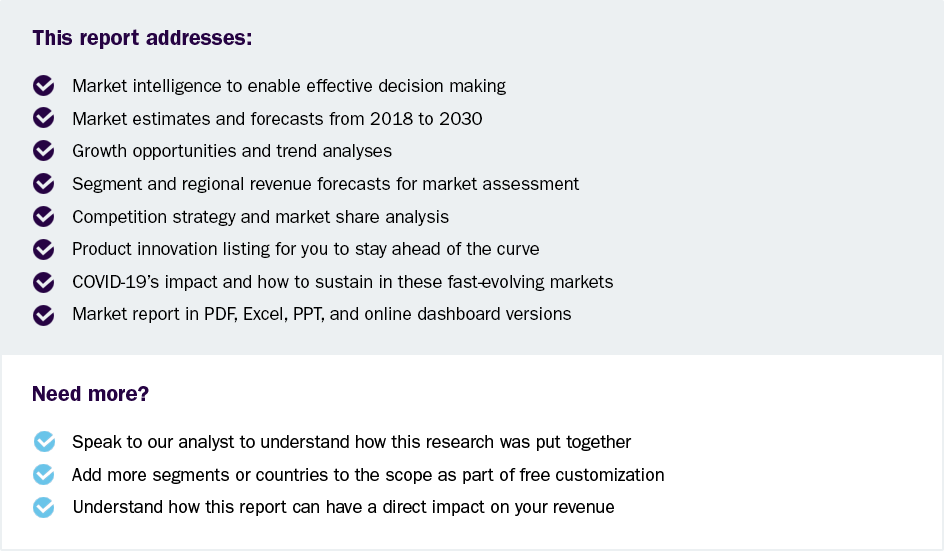Spatial Proteomics Market Size To Reach $199.8 Million By 2030
Spatial Proteomics Market Growth & Trends
The global spatial proteomics market size is expected to reach USD 199.8 million by 2030, registering a CAGR of 15.06% from 2025 to 2030, according to a new report by Grand View Research, Inc. The market is driven by the increasing demand for precision medicine and personalized therapies, particularly in oncology. As cancer continues to be one of the leading causes of death worldwide, as per NIH cancer statistics, over 1.9 million new cases were reported in the U.S. in 2023. There is a growing need for advanced technologies that can provide detailed insights into tumor biology and the tumor microenvironment. The growing focus on personalized medicine, advancements in genomics and proteomics, and rising investments in cancer research are key factors fueling the market growth of spatial proteomics over the forecast period.
In addition, spatial proteomics offers a unique advantage by allowing researchers to visualize protein interactions in their native tissue context, enabling the identification of specific biomarkers and therapeutic targets. This technology’s ability to dissect cellular heterogeneity and understand disease mechanisms at a deeper level has led to its adoption in research and drug development, especially for complex diseases like cancer, thus boosting market growth.
Another key driver of the market is the growing investment in proteomics research from both government agencies and private sectors. The aging population and the rising prevalence of chronic diseases, such as cardiovascular diseases, neurodegenerative disorders, and autoimmune diseases, have increased the demand for innovative diagnostic and therapeutic solutions. According to the World Health Organization (WHO), the proportion of people aged 60 years and older is expected to reach 2.1 billion by 2050, driving the need for more advanced technologies like spatial proteomics to develop effective treatments tailored to this patient population. This surge in funding and collaborative efforts between pharmaceutical companies, biotech firms, and academic institutions has accelerated technological advancements and expanded the application of spatial proteomics in various fields beyond oncology.
However, the market faces significant restraints, one of which is the high cost of advanced imaging and mass spectrometry equipment. These instruments require substantial capital investment, making them less accessible to smaller research institutions and laboratories with limited budgets.
 Request a free sample copy or view report summary: Spatial Proteomics Market Report
Request a free sample copy or view report summary: Spatial Proteomics Market Report
Spatial Proteomics Market Report Highlights
-
Based on product, consumables for spatial proteomics accounted for the largest revenue share of 56.19% in 2024.
-
Based on technology, imaging-based technologies for spatial proteomics accounted for the largest revenue share of 36.92% in 2024.
-
Based on workflow, the instrumental analysis accounted for the largest revenue share of 47.2% in 2024.
-
Based on sample type, the FFPE accounted for the largest revenue share of 58.53% in 2024. The FFPE samples are extensively used in hospitals, biobanks, and research institutions, containing vast collections of archived tissues from diverse patient populations, disease states, and time periods.
-
Based on end-use, the academic & translational research institutes segment accounted for the largest revenue share of 67.92% in 2024 and is anticipated to grow at the fastest CAGR over the forecast period.
-
North America spatial proteomics market dominated the global market in 2024 with a share of 49.13%. This is attributed to advanced healthcare infrastructure, substantial investment in research and development (R&D), and the presence of key market players.
Spatial Proteomics Market Segmentation
Grand View Research has segmented the spatial proteomics market on the basis of on product, technology, workflow, sample type, end-use, and region:
Spatial Proteomics Product Outlook (Revenue, USD Million, 2018 - 2030)
-
Instruments
-
Automated
-
Semi-automated & Manual
-
-
Consumables
-
Software
Spatial Proteomics Technology Outlook (Revenue, USD Million, 2018 - 2030)
-
Imaging-based Technologies
-
Mass Spectrometry-based Technologies
-
Sequencing-based Technologies
-
Other technologies
Spatial Proteomics Workflow Outlook (Revenue, USD Million, 2018 - 2030)
-
Sample Preparation
-
Instrumental Analysis
-
Data Analysis
Spatial Proteomics Sample Type Outlook (Revenue, USD Million, 2018 - 2030)
-
FFPE
-
Fresh Frozen
Spatial Proteomics End-use Outlook (Revenue, USD Million, 2018 - 2030)
-
Academic & Translational Research Institutes
-
Pharmaceutical and Biotechnology Companies
-
Other End Use
Spatial Proteomics Regional Outlook (Revenue, USD Million, 2018 - 2030)
-
North America
-
U.S.
-
Canada
-
Mexico
-
-
Europe
-
Germany
-
UK
-
France
-
Italy
-
Spain
-
Denmark
-
Sweden
-
Norway
-
-
Asia Pacific
-
China
-
Japan
-
India
-
South Korea
-
Australia
-
Thailand
-
-
Latin America
-
Brazil
-
Argentina
-
-
Middle East & Africa
-
South Africa
-
Saudi Arabia
-
UAE
-
Kuwait
-
List of Key Players in the Spatial Proteomics Market
-
10X genomics
-
Bruker
-
Fluidigm Corporation
-
NanoString Technologies, Inc.
-
Akoya Biosciences, Inc.
-
PerkinElmer
-
Danaher
-
Biotechne
-
S2 Genomics, Inc.
-
Seven Bridges Genomics Inc.

